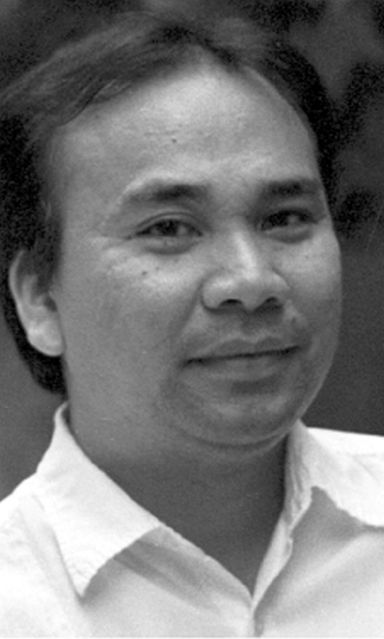
BERSALES
Fr. Dionisio Miranda, SVD, president of the University of San Carlos, summed up its reason for existence: when he first arrived here there was no single volume that covered everything that one needed to know about Cebu.
And so was born “The Cebu Almanac 2016” last year, a 334-page softcover that presented quick facts and figures about Cebu.
Last Tuesday, the 2017 edition of “The Cebu Almanac” was launched at The Gallery of the Ayala Center Cebu. Sub-titled “The Reports,” this slimmer volume presents 20 articles or, more appropriately analytical, reports on various aspects of Cebu, ranging from population to heritage, economy to politics and water to disaster preparedness.
This year’s almanac presents the outputs of the research centers and units of USC. Frank Largo, Cebu Almanac project head, summarizes the findings of the Water Resources Center in terms of private water utilities and the price of water per cubic meter, while Dr. Socorro Gultiano of the Office of Population Studies tackles Cebu’s population growth from 2010 to 2015.
The latter’s colleagues at OPS, Drs. Alan Feranil, Judith Borja and Nanette Lee-Mayol, on the other hand, report on findings from the Cebu Longitudinal Health and Nutrition Study (CLHNS) on the importance of the first 1000 days in the health of an individual.
The CLHNS has been looking closely at the development of a number of infants starting in 1983 into their adulthoods today and continuing, incidentally the only study of its kind.
Joyce Natalie Yang of the School of Business and Economics, meanwhile, looks at the status of the Cebu furniture industry based on a study she conducted earlier, while Dr. Richard Jugar, director of the Basic Education Department, focuses on the first year in the implementation of the Senior High School Program by looking at the data from Cebu City schools alone.
On the work of USC’s Phil LIDAR Center, Dr. Rolando Otadoy discusses the use of new technologies to map disaster risk areas in Cebu while lifelong partner, Dr. Julie Otadoy, looks at the state of Cebu’s plant diversity through its forests, together with her colleagues at the Biology department, Val Salares, Antonio Tambuli, Kristine Mae Bentoy, with photographs by Fr. Jun Rebayla, SVD.
From the Department of Economics, chair Cris Bancungan looks at the state of the health care system in the Philippines, focusing on Cebu province, while colleague Julian Thomas Alvarez writes on financial services and the state of financial and banking transactions in Cebu. Another colleague in the Department of Economics, Jan Lorenzo Alegado, analyzes the results of the 2016 elections while testing three hypotheses regarding voter preference. Alvarez also looks at the agricultural sector in Cebu and how it fares vis-à-vis food production elsewhere in the country.
A guest writer of the Department of Economics, Canadian-based firm Canmac Economics Ltd. analyzes the Cebu economy and makes some important forecasts worth noting.
With Cebu Daily News as media partner, highlights of events in 2016 are presented by journalist Cris Evert Lato-Ruffalo, who also writes on the real estate industry in Cebu and the plans of the Mactan-Cebu International Airport.
The Cebu Chamber of Commerce and Industry, the business partner in this year’s almanac, contributes two important articles other than the Grand Chamber Awards of 2016 written by Juffer Bornales: the chamber’s important work as a driver of Cebu’s growth, ably presented by executive-director May Elizabeth Ybañez and its thrusts to make Cebu an island of innovation by Joy Amador-Segismar.
Although this will sound self-serving but, nevertheless, I close the almanac with a discussion on how much the National Historical Commission of the Philippines has spent restoring 16 heritage structures, mostly churches, in Cebu.
USC’s overall plan is to produce one volume of this almanac each year for an initial eight more years, with each year delving on a special concern for Cebuanos as its major focus, while also providing other facts and figures.
Thus, next year’s issue is designed to shed light of agriculture production and why Cebu languishes in this area, despite the overwhelming number of farmers and fishers. But that is, as they say, getting ahead of the story. After 10 years, a 10-volume set shall have been produced that will show how much has happened in Cebu and where it is heading to.
Highlights of “The Cebu Almanac 2017” can be viewed through an exhibition of facts and figures entitled “The Cebu Reports” at the second floor of The Gallery at Ayala Center Cebu, which will run until Sunday July 31. Copies can be purchased there at a discount. You may also call USC Press for orders (Tina, Tel. [032]2531000 loc. 290) or USC Museum Shop (Tel. [032] 2531000 loc. 191) and Phialo Trading (Tel. [032] 4172819 . Those outside Cebu may email USC Press at [email protected].
Disclaimer: The comments uploaded on this site do not necessarily represent or reflect the views of management and owner of Cebudailynews. We reserve the right to exclude comments that we deem to be inconsistent with our editorial standards.
